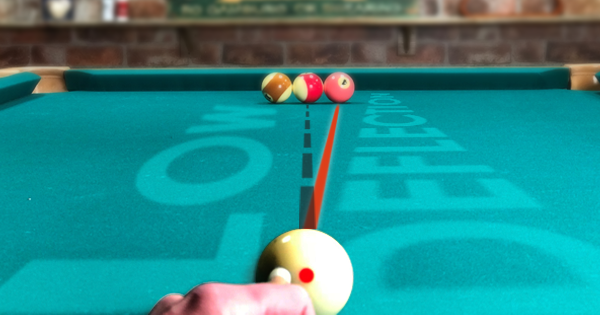
There is a lot of confusion out there with respect to this issue, but for almost all of us, the answer, in my opinion, is YES.
Squirt is cueball deviation from the stick line. It happens every time you use sidespin. It's an angle change for the cueball that happens during the instant when your tip strikes the ball off its vertical center. Squirt is caused by your shaft. All shafts cause squirt – some less than others. Less is good.
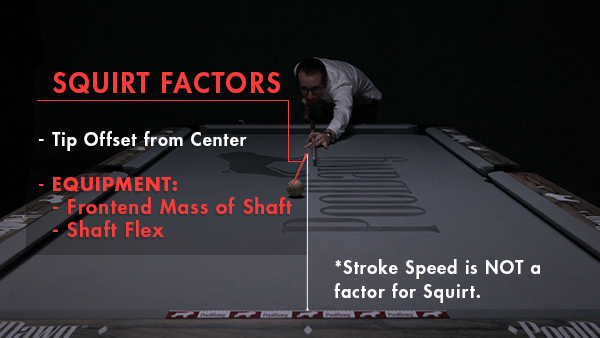
Note that most of the high-tech shaft marketing information will say things such as "low-deflection shaft". You'll rarely see the word "squirt," but that's what they mean. From a technical perspective, we prefer to say that the shaft deflects (bends toward the side of the cueball), while the cueball squirts away from the sidespin. For example, if you use left english, the cueball will squirt to the right.
Since squirt is an angle change in the cueball's travel line (not a curve), the farther the ball travels before it hits its target, the bigger a factor this is. You must accommodate for squirt in your aim to make the cueball go where you want it to go.
Let's talk about the practical difference between standard shaft and a low-deflection shaft. In the diagrams below we're trying for a full hit on an object ball six feet away, and we're hitting 50% of the maximum sidespin with each shaft. Aim straight at the target ball. Now shift the stick over in parallel and aim to hit 50% sidespin on the cueball, pointing at the same spot on the target ball (to produce a repeatable experiment).
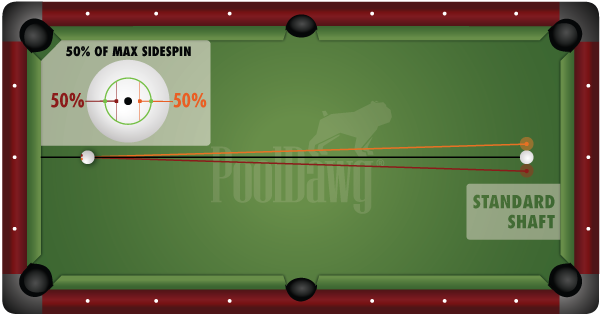
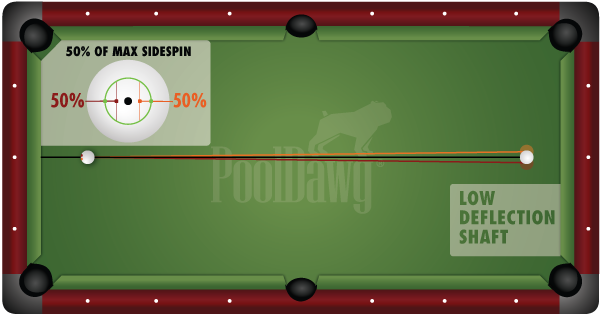
A standard shaft might squirt the cueball enough that it completely misses the target ball, while a low-deflection shaft causes the cueball to be only an inch off target at impact. So, to hit that target squarely with the standard shaft, you would have to aim about a ball's width (2-1/4") to the side of the target! If you used left english, the cueball squirts to the right, so you'd have to aim 2-1/4" to the left to make it work. On the other hand, with a low-deflection shaft, you only need to adjust your aim an inch. Less adjustment is less adjustment. Your accuracy goes up.
Factors: The more tip offset (english) applied to the cueball, the more squirt. The squirtier your shaft, the more squirt. More squirt means more aim adjustment. Good news – speed is not a factor. You get the same squirt angle for a given offset at whatever speed you hit.
What Causes Squirt?
If you look down at your tip that’s about to touch the cueball with english, you can see that most of the energy in the stick is going to push the cueball in the direction the stick is pointing. However, a small portion of that energy is pushing the ball to the side, away from the tip. That's what causes squirt.
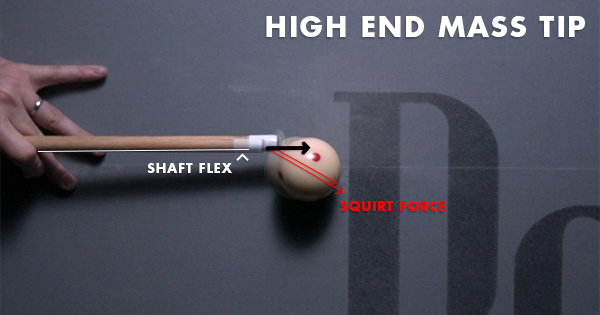
There is no such thing as a no-deflection shaft, but the low-deflection shafts certainly make a real and useful difference. To the extent the shaft can happily bend off the side of the cueball, the ball squirts less. That doesn't mean a whippy shaft is appropriate. It means the shaft taper and internals have to be engineered for the purpose. Yes, low-deflection shafts are generally more flexible – more flexible in the right way.
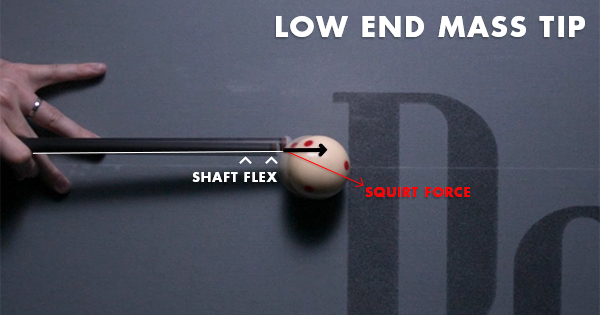
What Makes Low-Deflection (Squirt) Shafts Work?
The main factor is "end mass," the amount of weight at the tip end of the shaft. Reducing end-mass allows the shaft to not push so much against the side of the cueball, thus reducing squirt. Some manufacturers accomplish this by using shorter ferrules or wooden ferrules (plastic weighs more than wood, so less plastic at the end of the stick reduces end-mass). In addition, they use various ways to further reduce the mass. One manufacturer drills a hole through the center of the stick from the tip down about six inches or so, and leaves it hollow. Another drills the hole and then re-fills it with balsa, which is much lighter than maple. Another drills the whole shaft and then fills the hole with a foam rubber type of material. Yet another uses a carbon fiber rod inside the shaft. So they all get to a similar result.
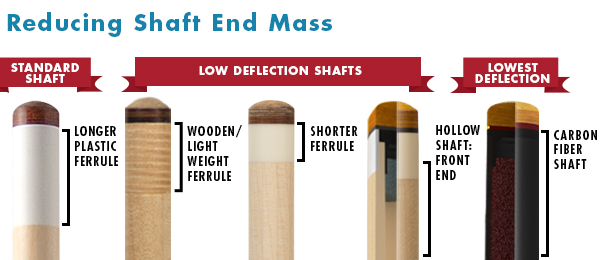
 Frank Says: "PEAK performance at BASE prices = GREAT VALUE! Check out the Summit Pro-LD cues and shafts featuring Low Deflection technology and KAMUI Clear Original Soft tips. Shafts in 11.5mm or 12.5mm are also available in common joint styles!"
Frank Says: "PEAK performance at BASE prices = GREAT VALUE! Check out the Summit Pro-LD cues and shafts featuring Low Deflection technology and KAMUI Clear Original Soft tips. Shafts in 11.5mm or 12.5mm are also available in common joint styles!"
Which Low Deflection Shaft Is Right For You?
Most of the performance shaft manufacturers offer two models. Typically, one will have a 12.75mm tip and the other will have an 11.75mm tip. Skinnier shaft tapers also reduce end-mass, so the 11.75's squirt even less than the 12.75's. However, the 11.75's are not necessarily better for every player. My opinion is that while they squirt less, they require the player to be more accurate on where exactly they touch the ball (they are less forgiving). On the plus side, the 11.75's, being a smaller tip, allow you to more precisely see where your tip will touch the ball.
Conclusion: If you use sidespin, your accuracy will improve with a low-deflection shaft. They each feel a little different, so my advice is to try a couple before you decide which one you want. Usually, you can find several players with the shafts you'd like to try. Hit some sidespin and see how close the ball comes to landing where you aimed, and how you like the feel of that shaft. This may be the best equipment money you can spend.
- RELATED ARTICLES
- How Much English Is Too Much? – by Tom Simpson
- Using Squirt – by Mark Finkelstein
- Understanding The "English" Of A Cue Ball – by The PoolDawg Staff